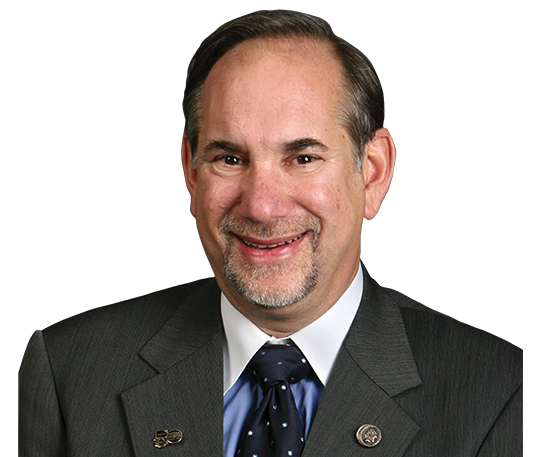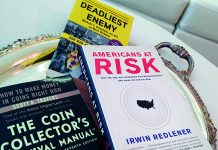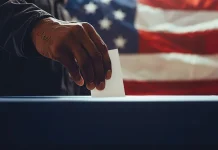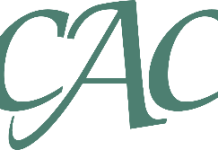
Editor’s Note: Mr. Donald H. Kagin, Ph.D., is running for the position of president in the American Numismatic Association’s current election. Members of the ANA have until July 1 to cast their ballots. Learn more >>>https://www.coinagemag.com/candidates-set-for-ana-board-of-governors-election
By Donald H. Kagin, Ph.D.
If nothing else, the horrible realities of the past year of having to deal with a world-wide pandemic has forced us in the hobby business to adapt if we were to survive. The most significant adjustment the collectibles industry has made is the accelerated use of digital/virtual technology for conducting all phases of our hobby.
It is axiomatic that markets and lifestyles change, but recent events have brought an urgency to innovate and change our hobby—and for some of us, our livelihood—to avoid its peril.
There’s no question that the future of not just the numismatic industry but all collectibles (and perhaps most businesses in general) is in the expanded utilization of the internet, virtual technology, and data mining.
While these changes were coming, there is now a widespread reality that we need to harness this technology in such a way that we can make lemonade out of this pandemic lemon. They say “adversity is the mother of invention,” and time and again the numismatic community has responded.
RECENT INNOVATIONS
The need for innovation is nothing new; when I worked for my father and uncle in the mid-1960s, I would often hear laments from various sectors of the impending doom of our hobby: “You can’t find rare coins in change anymore.” “Grading is too subjective; there are no standards.” “Counterfeits from the Middle East and China will ruin the industry.” “Government regulation is preventing us from making any money.”
To answer these challenges, the two most significant changes adopted by our industry over the last half century include the standardization of numismatic grading and technological advances—specifically the internet.
The lack of a universal grading standard had plagued the coin industry since the hobby’s inception; everyone had his or her own interpretation on what constituted wear and, therefore, value. Although books on grading have been around for several decades, no one system was agreed upon until the 1977 publication of the Official ANA Grading Standards for United States Coins. A decade later, the Professional Coin Grading Service essentially adopted and expanded on these standards, sonically sealing coins in what became known as “slabs” and guaranteeing the authenticity, attribution, and grades given by their professional graders.
These innovations have led to the development of “independent grading services” which, in turn, have provided more accurate population reports, pricing data, and instilled more confidence in the grade and value of coins and, eventually, currency by collectors, investors, and casual buyers of these historic artifacts.
The internet and the dissemination of online numismatic information through social media clearly is a significant development for our industry. This burst of new technology has led to immediate access to a wealth of data and has provided for a more sophisticated and easier information delivery system. These platforms provide access to significant educational information, programming, products, services and events exemplified by Kagin’s (my company) announcement of the Saddle Ridge Hoard gold treasure. In 2014 this became international news within minutes, including on over 1.65 million websites worldwide.
By marketing these coins through Amazon.com, we were able to reach hundreds of thousands of new potential collectors who were first enamored by the story and then wanted a piece of that history. Besides opening a new platform to sell multiple quantities of similar coins, this venture was also about bringing numismatics to a gigantic untapped audience of potential collectors and investors.
Today, one can mine terra-bytes of numismatic data, readily find specific wants from a huge database of hundreds of thousands of coins, and verify their authenticity and value. You can access specialists to ask technical questions anywhere in the world, manage your account, and place your purchases in a virtual notebook that will automatically update the scope and value of your holdings.
The internet has allowed universal access to interactive online museums and the development of networks for worldwide crime alert systems and combating counterfeiting.
In addition, commercial opportunities abound, such as eCommerce sites including eBay, Amazon, and a proliferation of online auctions.
Independent grading coupled with population reports helped standardize grading and, to a certain extent, made generic coins fungible so new collectors/investors could feel more confident about receiving fair value.
Technology, intense research, and networking has helped combat counterfeiting; the precursor to the Industry Counsel for Tangible Assets (ICTA) was formed in 1981 as a watchdog for potential harmful legislation.
THE NEAR FUTURE
But constant innovation is necessary in all areas of numismatics, including marketing numismatics to new audiences. We will see more accurate and in-depth accumulation of data and the providing of speedier access to such information. And there will be more sophisticated and easier delivery systems of both information and products, as well as better educational and career opportunities in numismatics.
Expanding the collector base may be job one if there is going to be a robust future for our hobby. The U.S. Mint’s Hip Pocket (USMint.gov) program aimed at educating our youngest demographic has been helpful but probably could benefit from more input from the American Numismatic Association and the Professional Numismatists Guild. Certainly, the various Washington quarter state and national park programs as well as presidential dollars and other commemorative issues have stimulated interest in coin collecting.
Led by the ANA, I expect to see the significant expansion of online educational programming by providing access to numismatic curriculum 24/7 on any electronic device, including smart phones.
We should soon see the implementation and management by ANA of best practices for virtual club meetings and provide clubs with a database of live and virtual presentations that they will be able to easily access.
Smart phone app equivalent to a Facebook for numismatists with local content about events and Skype-like reviews has recently been introduced, and new specialized numismatic interest platforms will continue to be developed.
Additional partnerships with government entities will continue leading to new exciting coinage such as the 2006 commemoratives that garnered $4.75 million towards a future American Money and Gold Rush Museum at the Old San Francisco Mint—a potential destination for thousands if not millions of new collectors. And most recently, the passage of a bill to strike new 1921-2021 commemorative silver dollars. These initiatives and other similar projects are ongoing.
Coin shows will undoubtedly be modified. Trade shows will thrive while major shows incorporating educational forums, club meetings, and live auctions will evolve. In anticipation of this new normal, use of virtual mediums rather than live participation will become more prevalent. Virtual coin shows may be next.
FUTURE INNOVATIONS
Possibly the next big innovation will be in numismatic content delivery systems. While the major grading services of Professional Coin Grading Service (PCGS) and Numismatic Grading Corporation (NGC) as well as the major auction houses now provide readily available data, access to the industry is still fragmented. Just like shopping malls replaced the individual retail stores, soon there may be one-stop numismatic communities for e-commerce.
You’ll be able to research and explore numismatic stories, readily find specific wants from a data base of tens of thousands of coins, verify value, ask technical questions from experts, manage your account, place your new purchases in a virtual Whitman Blue book that will automatically update the scope and value of your holdings. All this information will be available from the QR code on your coin “slab.”
Other educational innovations could include placing University of Rare Coins curriculum in the hands of traditional schools as either standalone classes or as part of other courses that will give students early exposure to numismatics, eventually leading to college credit or even degrees.
Universal access to interactive online museum tours as well as the more visceral experience of mortar-and- brick structures could bring millions more to the world of numismatics.
It’s clear that if we are to attract a new generation of coin collectors, we need to go where the market is, which is constantly changing. Recently, more people watched a championship match of a game called League of Legends than the Super Bowl. This game attracts over 27 million young people a day. Apparently, while there are financial incentives, the competition and recognition from winning is most compelling. This has been shown to be true with the brilliant innovation by the major grading firms of Registry Sets—which tap into the compelling motivation of competing to assemble the finest collection in literally hundreds of categories. Our industry needs to find new and exciting ways to merge numismatics, gamification, art, the internet, and eventually artificial intelligence, to attract this new audience.
Eventually, the new tag line for numismatics will be “History in Your Hands – and at Your Fingertips.”
Donald H. Kagin, Ph.D., earned the nation’s first Bachelor of Arts degree in Numismatics granted by Northwestern University, simultaneously earning another B.A. in History. Graduate studies at Union Institute and University, the Smithsonian Institution, and additional colleges earned him a Certified Financial Planner credential and the first Doctorate in Numismatics degree. Dr. Kagin’s numismatic expertise includes pioneer gold coins and U.S. currency, for which he has written award-winning reference books. He serves as a consultant to governments, banks, and trust departments, further enhancing his standing as one of the leading coin experts in the world. His highly acclaimed, award-winning book, Profit from Gold and Rare Coins Now, is the most comprehensive treatment of that subject, and his work in that area can be found in national publications such as Money magazine, U.S. News and World Report, Barron’s, and the Wall Street Journal. Don has also lectured and taught across the United States, conducted seminars and educational forums, and made scores of radio and television appearances including multiple appearances on Good Morning America, National Geographic, and History Channels. For eight years, he served on the Board of Governors of the American Numismatic Association, most recently as Vice President.














